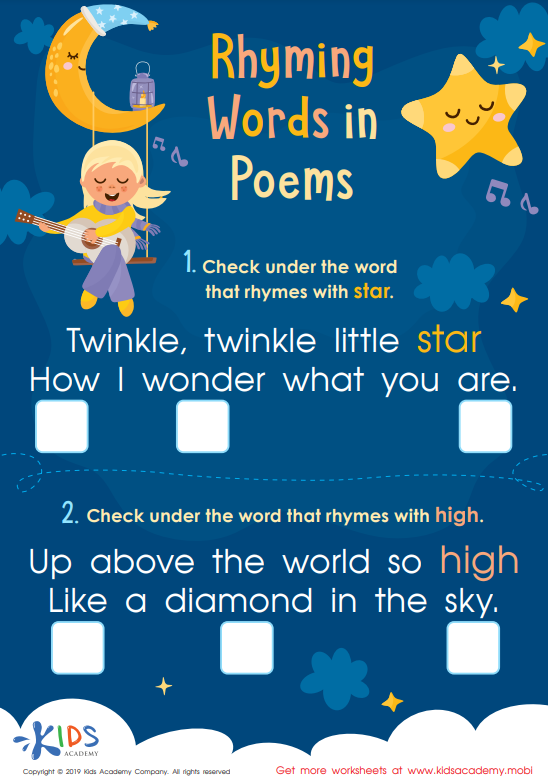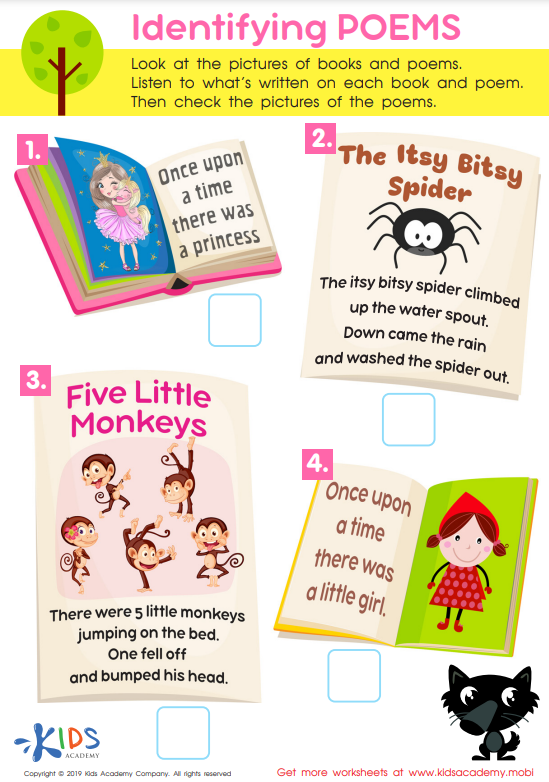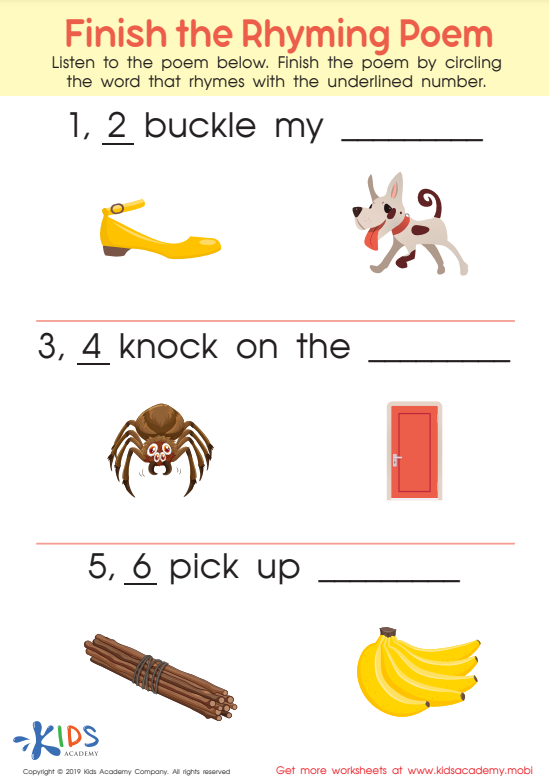-
English
-
English Pre-K
-
Unit 1: Early Literacy Skills
-
ABCs
- Pre-writing Activities
- Letter A
- Letter B
- Letter C
- Letter D
- Letter E
- Letter F
- Letter G
- Letter H
- Letter I
- Letter J
- Letter K
- Letter L
- Letter M
- Letter N
- Letter O
- Letter P
- Letter Q
- Letter R
- Letter S
- Letter T
- Letter U
- Letter V
- Letter W
- Letter X
- Letter Y
- Letter Z
-
Phonological Awareness
- Rhyming Words
- Letter Sounds B, C, D, and F
- Letter Sounds G, H, J, and K
- Letter Sounds L, M, N, and P
- Letter Sounds Q, R, S, and T
- Letter Sounds V, W, X, Y, and Z
- Letter Sounds A, E, and I
- Letter Sounds O and U
- Beginning Sounds
- Matching Letters to Sounds
-
ABCs
-
Unit 2: Vocabulary
-
Common Words
- Sorting Words into Categories
- Color Words
- Verbs and Adjectives
-
Sight Words
- Sight Words 'I' and 'Can'
- Sight Words 'You' and 'Like'
-
Common Words
-
Unit 3: Print Awareness
-
Parts of a Book
- Working with a Book
- Spaces Between Words
- Text and Illustrations
-
Picture Books and Poems
- Picture Book Text Features
- Poem Text Features
- Signs and Labels in the Community
-
Parts of a Book
-
Unit 4: Reading Literature
- Questions About Stories
- Discussing Stories
-
Unit 5: Reading Informational Texts
- Retelling Details in a Text
- Questions About a Text
- Connections Between Events
- Text Features
- Describing Illustrations
-
Unit 1: Early Literacy Skills
-
English Pre-K
-
Math
-
Math for Pre-Kindergarten
-
Logic and Geometry
-
Matching and Sorting
- Same and Different
- Which One Is a Little Different?
- Objects That Go Together
- Sorting by Color and Size
- Sorting The Same Group in Different Ways
- Patterns
-
Shapes
- Shapes in Our Environment
- Naming Shapes Regardless of Size
- Making Shapes in Preschool
- Comparing Shapes
- Relative Positions
- Sorting Shapes
-
Matching and Sorting
-
Early Number Sense
-
Numbers 1–5
- Counting to 3
- Counting to 5
- Arranging Objects up to 3 Objects
- Arranging up to 5 Objects
- Writing Numbers 1–5
-
Numbers 1–5
-
Numbers up to 10
- Counting to 10
- Arranging up to 10 Objects
- Number 0
- Writing Numbers 6–10
- Breaking Down Numbers 6-10
-
Logic and Geometry
-
Math for Pre-Kindergarten
Poem Text Features
Roses are red, violets are blue.
Your toddler will love to read poems with you.
Poems are great for early literacy skills. These short snippets of text support phonemic awareness, phonics, and comprehension.

The main appeal of poems for this age group is the manageable length. Multiple pages in picture books are a big step for young readers and poems serve as a bridge to longer works. It’s not hard to find poems that your child enjoys. From one stanza to the next your child can find humor, creative creatures, and memorable characters. Poems are used to teach concepts like the days of the week. Kids Academy provides research-based materials to help your child identify poems.
Phonemic Awareness
Many parents and teachers have found great success using poems to teach phonemic awareness. Phonemic awareness is an umbrella under which your child is recognizing and manipulating sounds. Phonics connects these sounds to printed letters. Poems often feature rhyming words and a predictable rhythm. Identifying rhyme is an essential function in learning how to decode words.
Activities like Rhyming Words in Poems from Kids Academy can be used to reinforce rhymes. This is another opportunity to build print awareness as your child is writing a check under specific words. If you notice your child predicting and calling out the rhyming word before you read it, you’ve made a breakthrough.

Kids Academy’s Finish the Rhyming Poem worksheet promotes using context and phonemic awareness.
Literacy Building Blocks
Incorporate decodable poems into your child’s daily reading routine. You can find books that are designed to teach phonics skills with poetry in a structured and systematic manner. For example, you may find a book of poems designed to teach words that feature the consonant-vowel-consonant, or CVC spelling patterns.
Read the poems and encourage your child to highlight or point to words with the spelling pattern that you’re focusing on. Poems are perfect for practicing sight words as well. Practice writing sight words with poems where your child fills a sight word in the blanks.
For example, the poem below can be used to teach the sight words “I”, “like”, and “to”.
I like to read books.
I like to read poems.
I like to read sight words.
I like to read everything.
Fluency
The rhythmic flow of poems makes them ideal to use to practice reading fluency. Read a poem at the beginning of the week and have your child read it to you each day. At the end of the week, your child should read more accurately at an increased rate of speed. Additionally, the text should be read with prosody or expression as they become more familiar with the poem.
The Bottom Line
Developing readers benefit greatly from access to a wide range of genres and topics. Their interactions with poems will change as they develop from children learning to read to scholars who read to learn. Visit your local library or use online resources like those provided by Kids Academy to reinforce early reading skills.


